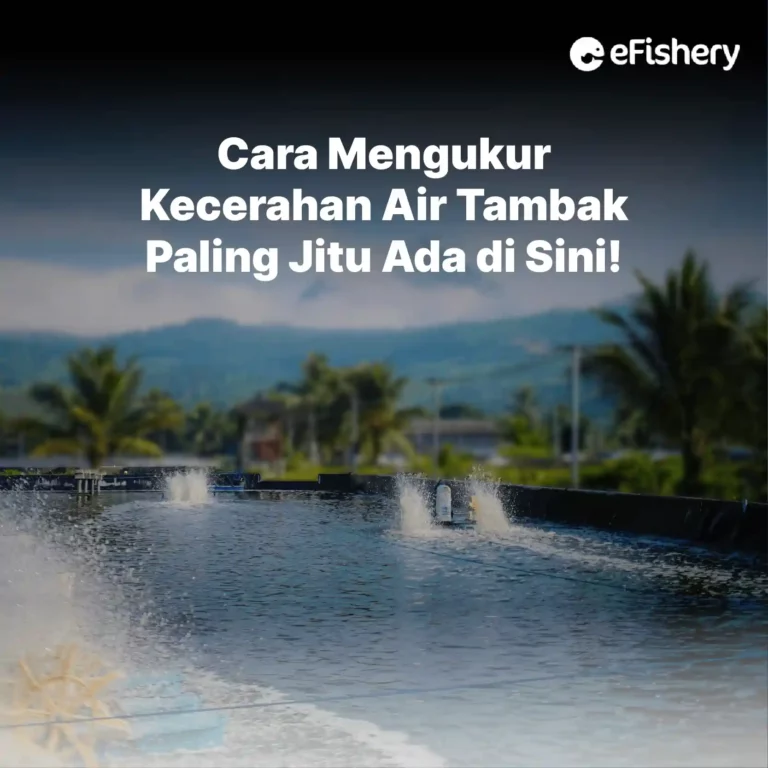Artikel Ini Telah Direview Oleh:

Muhammad Mustofa
Praktisi Budidaya Udang
Water quality is a major factor in the success of shrimp farming, one of which is the brightness of the water. How to measure the brightness of pond water is fairly easy, because you can use a water brightness meter, namely Secchi Disk.
Brightness or the level of light that can enter the pond is one of the limiting factors for shrimp growth. In shrimp farming, low water brightness can result in decreased oxygen levels, decreased water temperature, and reduced visibility of shrimp.
This causes the shrimp metabolism to decrease and the shrimp appetite to be disturbed. Another bad thing is that the shrimp become stressed and can result in the death of the shrimp. For this reason, you are advised to always check the quality of the water, one of which is the brightness of the water.
Come on, see the most effective way to measure the brightness of pond water here!
Shrimp Pond Water Brightness Measurement Tool
An instrument for measuring the brightness of seawater in shrimp ponds is Secchi Disk. This tool is in the form of a simple disc-shaped plate. on the surface Secchi Disk, there are black and white colors in the form of shading with four parts. Black on Secchi Disk used because it can represent dark colors, while white represents bright colors.
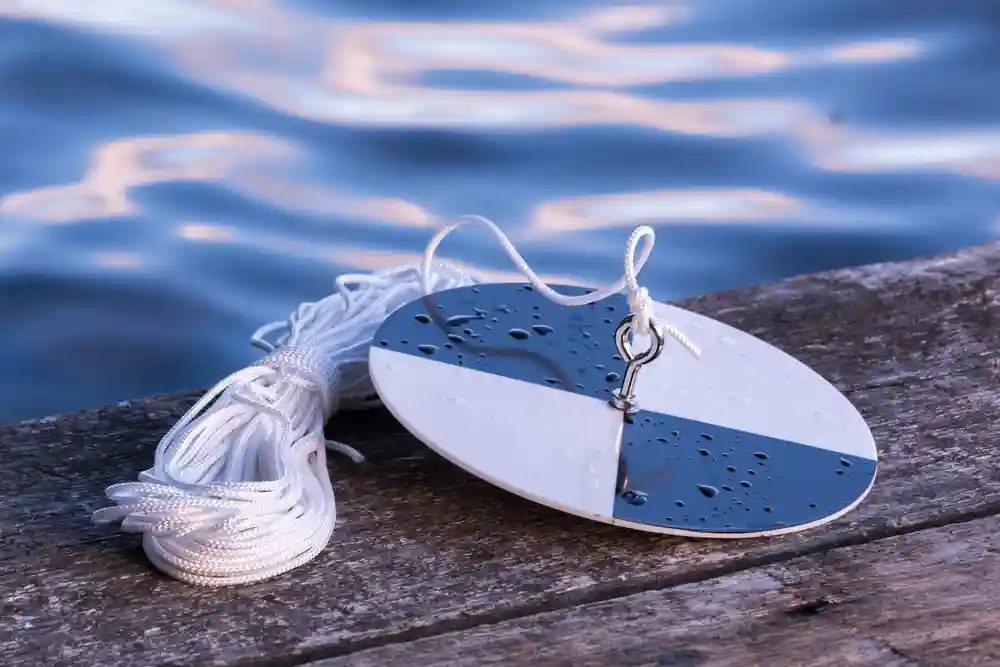
Secchi Disk is a seawater brightness meter that is easy to make, easy to use, and inexpensive. In addition, the tools and materials used to make Secchi Disk fairly easy to find, such as black and white paint, pipe clamps, ropes, round plates, weights and welding machines. Here's how to make Secchi Disk, among them:
1. Install the weight on the bottom of the plate Secchi Disk
2. Paint the round plate with black and white paint, as shown below:
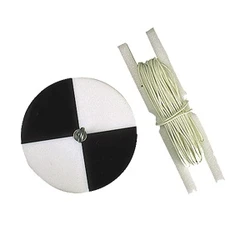
3. Attach pipe clamps and rope right in the middle of the plate that has been colored
4. Rope Secchi Disk Size marked every 10 cm
5. Secchi Disk can be used to measure the brightness of water
How to Measure the Brightness of Shrimp Pond Water
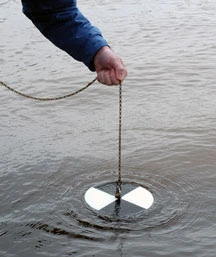
After knowing how to make Secchi Disk, Mr / Ms need to know how to use Secchi Disk to measure the brightness of shrimp pond water, including:
- Slabs Secchi Disk tied with a rope.
- Insert Secchi Disk into the shrimp pond.
- When the pattern is on Secchi Disk is no longer visible in the water at a certain depth, you can record how many centimeters the depth is on the rope that has been marked with a water level.
- After that, you can pull the rope Secchi Disk slowly, then note how deep Secchi Disk starting to look back, you can see the number on the rope which has been marked with a water level.
- To get maximum results, you can repeat these steps up to three times.
- After the brightness data is obtained from measurements Secchi Disk, Mr / Ms can calculate it with the formula:
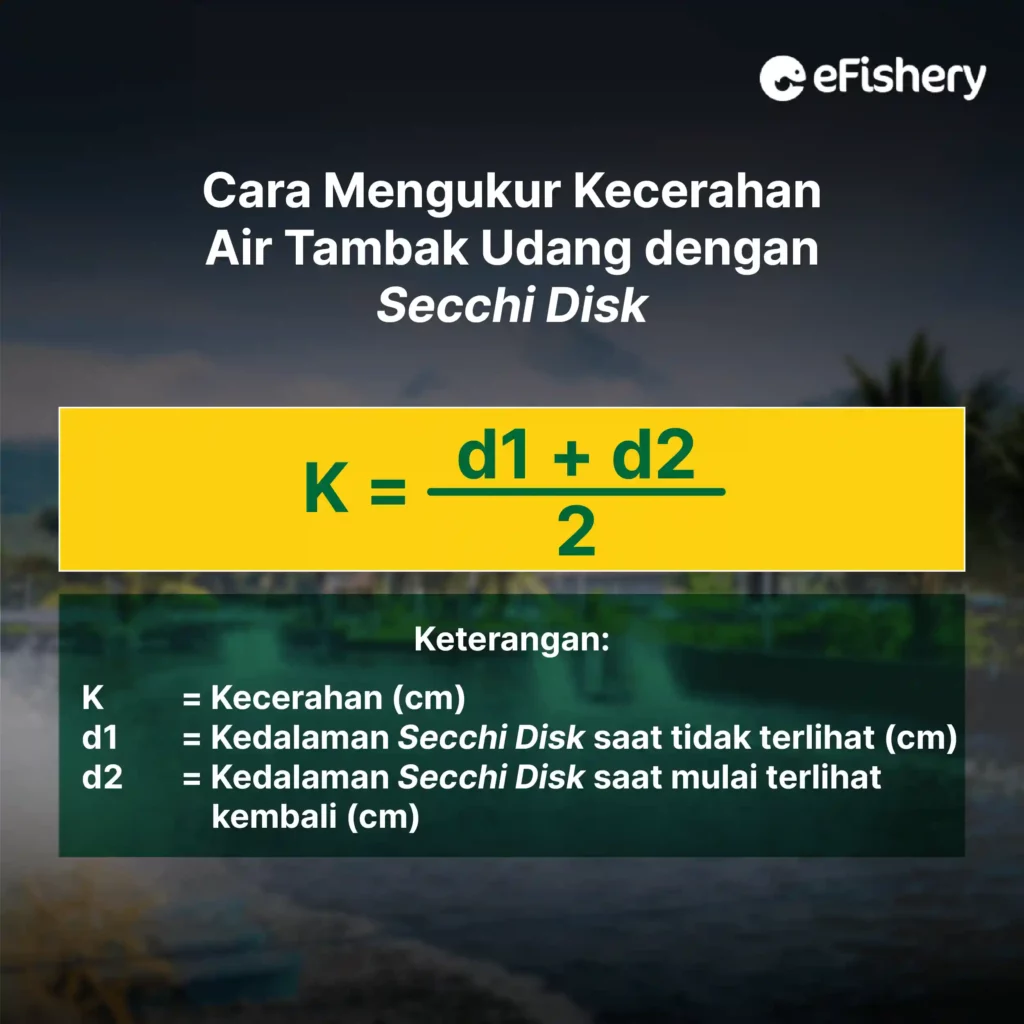
After you know the steps for measuring brightness with Secchi Disk, You need to know the best time to measure brightness, which should be done in the morning and evening.
Ideal Brightness of Shrimp Pond Water
The brightness of the pond water (transparency) that is good for keeping shrimp is 25-40 cm, depending on the depth of the pond itself. The brightness value is strongly influenced by the time of measurement, suspended solids, weather conditions, turbidity, and the accuracy of the farmer when taking measurements.
The brightness of the water in the pond also shows how far sunlight can penetrate into the pond. Sunlight is used by phytoplankton for photosynthesis, but excess direct sunlight is not liked by shrimp because it can cause stress for shrimp.
There are several constraints on the pond water brightness parameter, such as dense brightness (turbid) and clear brightness. Dark or cloudy brightness is caused by suspended solids in pond water. Meanwhile, the problem of clear brightness is caused by the death of plankton in the pond.
The brightness level of water needed by shrimp relatively changes according to their age, namely:
- Shrimp Larvae, the brightness level of the water needed by shrimp larvae is relatively high until it penetrates the pond bottom.
- Adult Shrimp, the brightness level needed is around 25-40 cm or adjusting the condition of the shrimp.
The Effect of Brightness and Turbidity of Shrimp Pond Water on the Smooth Cultivation
At the beginning of shrimp farming, usually the brightness of pond water tends to be high, because the plankton population is still low and the pond water is still clean. Meanwhile, the longer the cultivation age, the lower the brightness.
The brightness of the water in shrimp ponds is highly dependent on the abundance of phytoplankton, zooplankton, and dissolved particulate matter. The low brightness of the water is caused by the presence of suspended and dissolved organic and inorganic materials in the pond, such as mud.
It has been mentioned above, that the brightness of pond water that is good for shrimp maintenance is 25-40 cm. If the brightness of pond water is less than 20 cm, the penetration of sunlight becomes less, so that the water temperature becomes low and the photosynthetic activity of algae is less than optimal.
In addition, the low brightness of the pond can affect the decrease in oxygen levels in the pond, so that it can affect the survival of the shrimp. Low brightness can interfere with shrimp breathing because the gills are covered with mud particles.
The ideal brightness indicates good pond water conditions, because the decrease in water quality is caused by high levels of dissolved organic and inorganic matter. In addition, the population of plankton (phytoplankton) which is too high can cause a high pH of pond water during the day and a decrease in DO at night.
To maintain ideal brightness, you can apply liming, replace new water regularly in the afternoon or evening, apply minerals at night, and reduce the use of fertilizers. You also need to complete the materials that make pond water conditions stable (stabilizer).
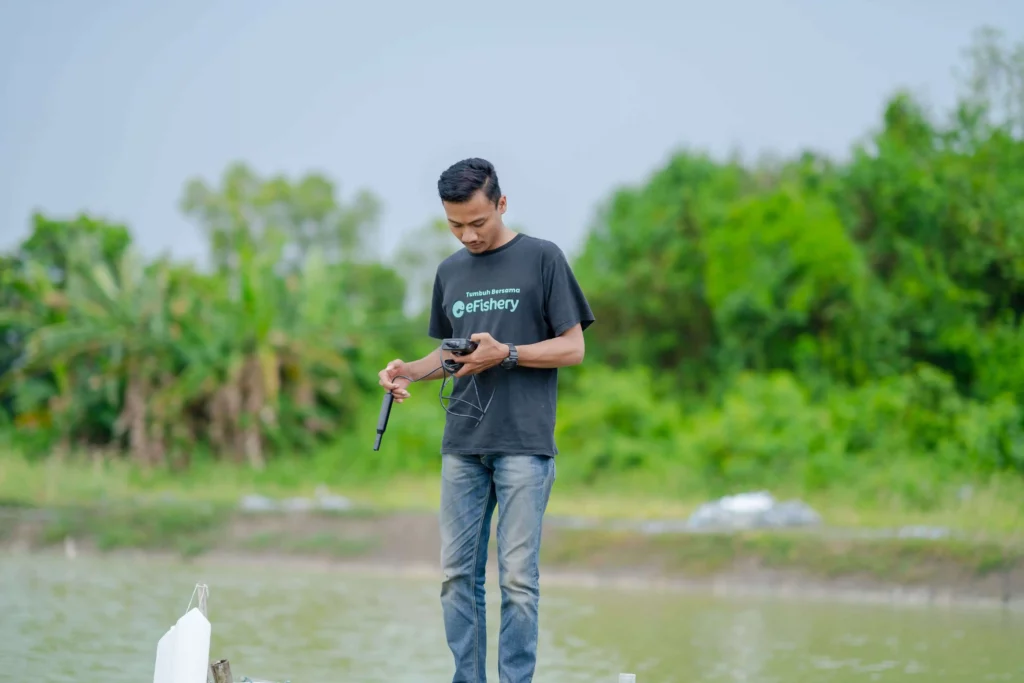
Brightness above 40 cm tends to indicate that the water tends to be clear with a low dissolved particle content and a small amount of plankton. However, high water brightness can cause too strong sunlight to enter pond water, this is very disliked by shrimp because it can cause stress to shrimp death.
If the brightness is above 40 cm, then you need to re-fertilize and apply treatments water, such as providing bran fermentation to nourish the shrimp and regenerating plankton in the ponds so that the source of nutrition is met according to standards.
Every farmer definitely wants the shrimp that are cultivated to grow well and have maximum survival. To achieve this, you need to carry out feed management and monitor water quality, including measuring the brightness of the water with Secchi Disk.
Need Help Regarding Shrimp Cultivation Business?
Fill in your personal data in the following form. Our team will immediately contact you via the number cellphone attached. Make sure the data entered is correct.
Adjust Water Brightness with Proper Feed Management with eFeeder 5!
Not optimal water brightness in shrimp ponds is caused by less than optimal feed management. One of the causes of decreased water brightness in shrimp ponds comes from uneaten feed which is then destroyed, which can affect the color and brightness of the water. For this reason, you need to carry out a feeding strategy so that the water quality improves.
The trick, you need to do good feed management by using eFeeders 5 for shrimp. With the latest technology, eFeeders 5 will help you to maximize shrimp farming. eFeeders 5 will make the distribution of feed and data recording more effective and efficient.
Additionally, use eFeeders 5 can make feeding regular, because the feed that is released is carried out little by little and will be directly eaten by the shrimp, so that there is no leftover feed left and destroyed then causing changes in water color and turbidity.
As for other benefits of eFeeders 5, such as accelerating shrimp growth, increasing production yields, optimizing FCR, making crop yields even, and improving water quality.
Those are the various benefits of using eFeeders 5. Interested in trying it? Let's fill out the form below! If you are lucky, you may get the opportunity to try to make a rental eFeeders 5 for FREE!

Muhammad Mustofa - Praktisi Budidaya Udang
Berpengalaman sebagai Asisten Dosen Universitas Pekalongan dan kini menjadi Online Technical Capability Development di eFishery
Questions Regarding Measuring the Brightness of Pond Water
The instrument used to measure the brightness of water is Secchi Disk.
The way to measure the brightness of water is with a slab Secchi Disk tied with a rope, then put it into the shrimp pond. When pattern Secchi Disk no longer visible at a certain depth, you can record how deep it is. After that, you can pull the rope slowly, then record how deep it is Secchi Disk starting to look back. Repeat these steps for up to three times to get maximum results.
- Halim AM, Krisnawati M, Fauziah A. 2021. Dynamics of Water Quality in Intensive Growing of Vannamei Shrimp (Litopenaeus vannamei) at PT. Andulang Shrimp Farm, Andulang Village, Gapura District, Sumenep Regency, East Java. Journal of Chanos Chanos. 19(2): 143-153.
- Rafiqie M. 2021. Water Quality Analysis of Vaname Shrimp (Litopenaeus vannamei) Culture in Community Ponds Construction of Cement Walls and Cement Pond Bottoms in Konang Beach, Panggul District, Trenggalek Regency. Journal of Fisheries Science. 12(1): 80-85.
- Suhendar DT, Sachoemar SI, and Zaidy AB. 2020. The Relationship of Turbidity to Suspended Particulate Matter (MPT) and Turbidity to Chlorophyll in Shrimp Ponds. Journal of Fisheries and Marine Research. 4(3): 332-338.
- Supriatna, Mahmudi M, Musa M, and Kusriani. 2020. Relationship between pH and Water Quality Parameters in Intensive Ponds of Vaname Shrimp (Litopenaeus vannamei). Journal of Fisheries and Marine Research. 4(3): 368-374.
